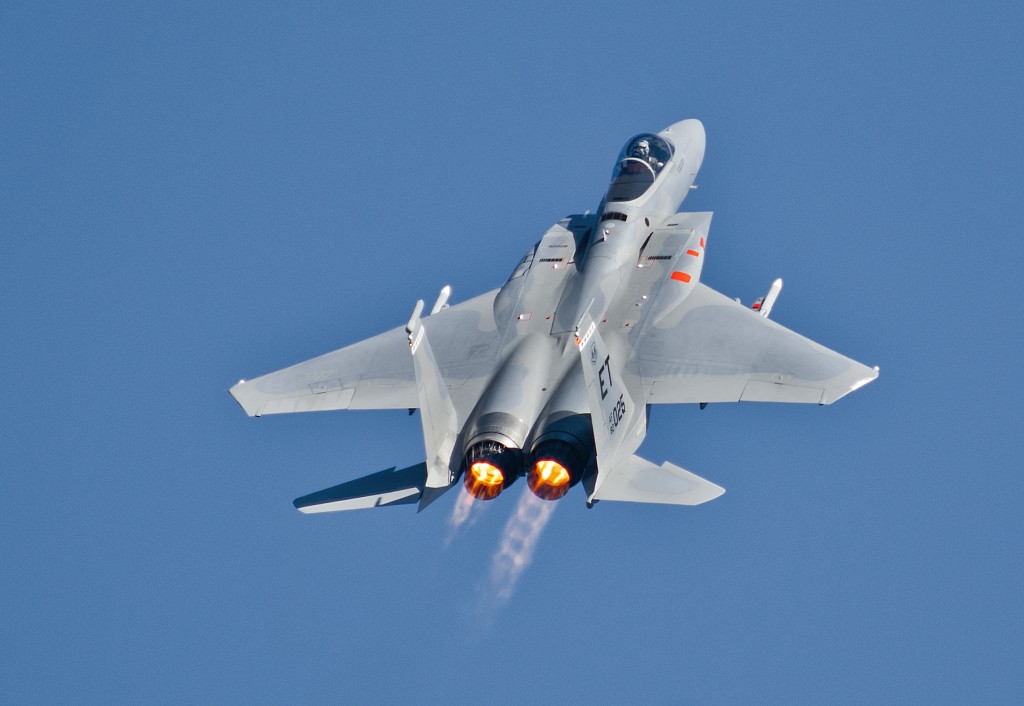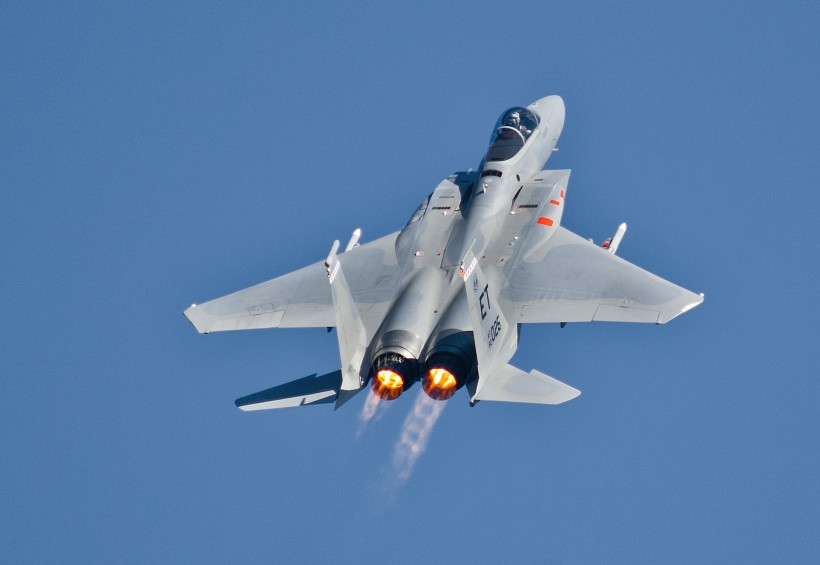
This picture is of an F-15 Eagle taking off for a morning sortie out of Eglin Air Force Base (AFB), Florida. The picture clearly shows the afterburners lit up, which provide additional thrust for the jet by injecting fuel after the turbine section of the jet engine to lead to a temperature increase, which in turn increases pressure, which then leads to accelerated flow. Essentially, the temperature increase leads to a more energized, faster moving flow to create more thrust. The additional mass flow due to the addition of fuel to the heated air also leads to a small increase in thrust, yet costs the pilot a significant amount of fuel, thus afterburners are generally only used in takeoff, supersonic flight, and combat maneuvers. Lastly, when the exhaust is moving fast enough, shock diamonds (as seen above) form in the nozzle jets due to the pressure difference between the supersonic exhaust gases and the ambient surrounding air. This pressure difference has a natural tendency to be driven back down to zero, but due to the continuous energizing of the flow upstream by the afterburners, the pressure differential tends to oscillate, producing the repeating shocks that make up the standing wave shock diamond pattern.

